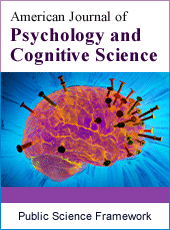American Journal of Psychology and Cognitive Science
Articles Information
American Journal of Psychology and Cognitive Science, Vol.4, No.3, Sep. 2018, Pub. Date: Aug. 10, 2018
Investigate the Effects of Group Counseling with Emotional-Logical Approach on Academic Achievement and Social Adjustment of Students
Pages: 41-45 Views: 2079 Downloads: 493
[01]
Ali Asghar Shafie Rais Abadi, Department of Counselling, Marvdasht Branch, Islamic Azad University, Marvdasht, Iran.
[02]
Hossein Aflakifard, Department of Educational Science, Farhangian University, Fars, Iran.
The main objective of this study is to investigate the effects of group counseling with emotional-logical approach on academic achievement and social adjustment of students. The statistical population of this study was all second periods’ secondary school students in the academic year of 2016-2015, including 299 people in Abarkuh. 170 subjects were selected based on the Cochran formula. To estimating the statistical sample, the cluster sampling was used to selection of schools and in the second stage samples were randomly selected through matching process 32 participants were selected randomly and were randomly assigned to experimental and control groups. Harter achievement motivation questionnaire was administered. The results of calculation of analysis of covariance indicated that group counseling with emotional-logical approach increased academic achievement in the experimental group. The results also suggested that group counseling with emotional-logical approach increases students' social adjustment.
Group Counseling, Emotional Logical Approach, Academic Achievement, Social Adjustment
[01]
Argyle, M., Martin, M., & Lu, L. (2006). Testing for stress and happiness: The role of Social and cognitive factors. In C. D. Spielberger & I. G. Sarason (Eds.), Stress and emotion. Washington, DC: Taylor & Francis.
[02]
Baldvin, C. L. and et al. (1988). Research choice for meaning outcome of high school group. Journal of Counseling and clinical Psychology. 194-98
[03]
Barlow, D. H. (Ed.). (2014). Clinical handbook of psychological disorders: A step-by-step treatment manual. Guilford publications.
[04]
Blum, R. W. (2005). A case for school connectedness. Educational Leadership. 62 (7): 16–20
[05]
Chauhan, ss (1993). Mental hygiene: Aseience of Adjustment. Second edition. New dehli, india: Allied publishers limi tited.
[06]
Christin M. Jungers, Jocelyn Gregoire. (2007). The Counselor’s Companion: What Every Beginning Counselor Needs to Know. London: Lawrence Erlbaum Associates, Inc
[07]
Conner, Marcia L. and James G. Clavson (2002). Create a Learning Culture, Transforming Culture Briefing on The power of Learning, June. WWW.agelesslearner.com.
[08]
Earley, Jay (2000) Interactive Group Therapy. Taylor
[09]
Ellis A. REBT diminishes much of the human ego. New York.. 8991, Institute of Rational Emotive Therapy
[10]
Ervin, J. (2003). Giving students what they need. British Journal of Guidance &; amp; Counseling, 34 (4): 143-156
[11]
Fredricks, J., Blumenfeld, P., & Paris, A. (2004). School engagement: Potential of the concept, state of the evidence. Review of Educational Research, 74 (1), 59-109.
[12]
Frey, l. M & Wilhite, K. (2005). Our Five Basic Needs: Application for understanding the function of behavior. Journal of Intervention in school and clinic. 40 (3): 156-160
[13]
Garber, j., Keily. M. K. & Martin, N. C. (2002). Development of adolescence depressive symptoms: predictors of change. Journal of counseling and clinical psychology, 70: 79-95.
[14]
Glasser, William (2002). Choice therapy, institute glasser. http.www.Wglasser.com
[15]
Rosen. M. (1998). A cognitive therapy model for behaviorally disturbed adolescent at a residential trereatment facility. Education and Treatment of Children. 21.62-67.
[16]
Rosenbum. J. N. and Carty. L. (1994). Healthy thinking: A group approach. Guidance and Counseling. 9. 160-172.

ISSN Print: 2381-7453
ISSN Online: 2381-747X
Current Issue:
Vol. 6, Issue 2, June Submit a Manuscript Join Editorial Board Join Reviewer Team
ISSN Online: 2381-747X
Current Issue:
Vol. 6, Issue 2, June Submit a Manuscript Join Editorial Board Join Reviewer Team
| About This Journal |
| All Issues |
| Open Access |
| Indexing |
| Payment Information |
| Author Guidelines |
| Review Process |
| Publication Ethics |
| Editorial Board |
| Peer Reviewers |


